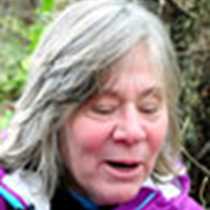Glacier Bay National Park and Preserve
Cruising up bay in the wake of the most recent retreat of the Grand Pacific glacier, we journeyed sixty-five miles north following the path of the receding ice. From the 200 year old spruce-hemlock forest surrounding Bartlett Cove; past stands of black cottonwood, steep slopes covered with shrubby Sitka alder and tiny wildflowers, to bare rock recently exposed to sunlight. Finally, we were stopped in front of the rock debris filled glacier face, no longer tidewater as it has recently backed unto its terminal moraine. All the land forms we’ve seen these past few days have been shaped by the glaciers of this region; sculpted, scraped, compressed and now rebounding.
Since the retreat of the ice, not only the land, but life itself has rebounded. On South Marble Island, hundreds of black legged kittiwakes swooped near their cliff nest sites as circling bald eagles caused everyone to lift off. Tufted puffins, horned puffins, black oystercatchers, common murres, glaucous winged gulls, and pigeon guillemots also nest here…a place that lay under glacial ice less than 200 years ago.
Mountain goats rested on Gloomy Knob, and soon after, ice began to appear in the water. Behind Russell Island, more seabirds -loons and scoters and murrelets dotted the surface. The dense blue ice of Lamplugh Glacier glowed beneath dark clouds and at the end of the journey, a prize… Margerie Glacier’s pale blue ice snaking high up into the Fairweather Mountains that feed it.
Down bound for Bartlett Cove our cultural interpreter, Bertha, shared some of the local Tlinget traditions and a bit later the whole package of our day was wrapped in a spectacular full rainbow!




